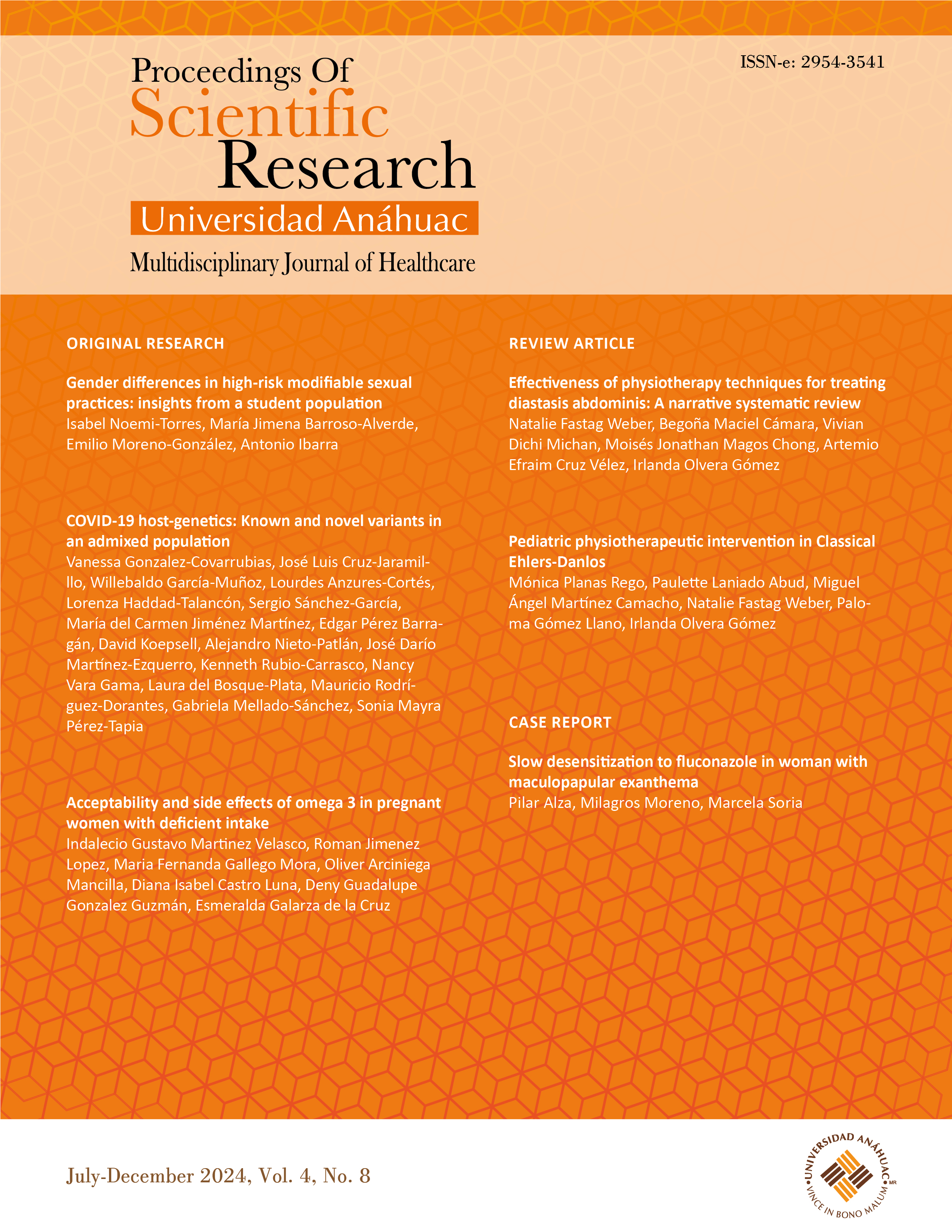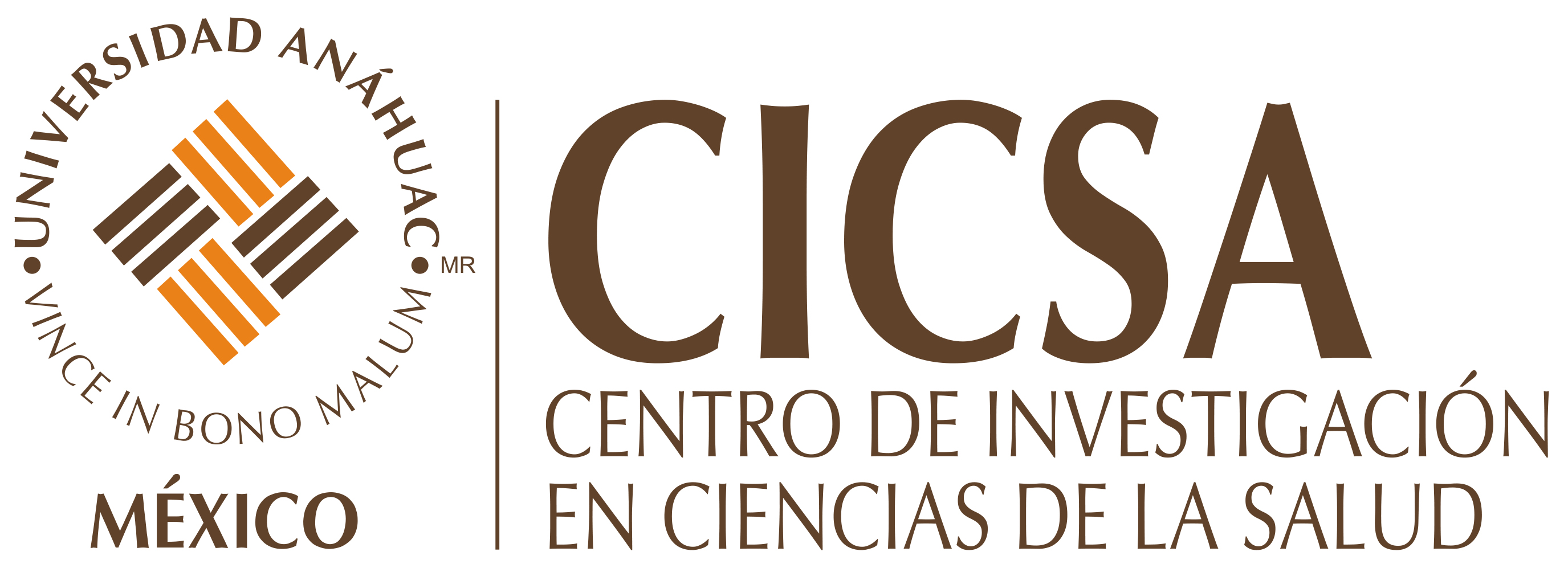Slow desensitization to fluconazole in woman with maculopapular exanthema
DOI:
https://doi.org/10.36105/psrua.2024v4n8.06Keywords:
cryptococcus neoformans, transplant, hypersensitivity, disseminated infection, desensitization, fluconazoleAbstract
Introduction: Desensitisation is a procedure that modifies the immune response to a pharmaceutical agent, thereby creating a transient tolerance to the drug in question. This allows the patient with an allergic reaction to continue receiving the requisite treatment without interruption. Once the desensitization process is terminated, the patient's hypersensitivity to the drug resumes. This case study presents the case of a 53-year-old woman with a personal history of kidney transplant who presents to the hospital with a lesion on the hallux of the left foot at the starting point of onychocryptosis, with a positive culture for cryptococci. The presumptive diagnosis is disseminated disease due to compatible lesions in the lungs, as indicated by computed tomography. Therefore, long-term treatment with fluconazole is recommended. During the administration of the antifungal agent, the patient developed a maculopapular rash with pruritus, which was diagnosed as a hypersensitivity reaction to the drug. Consequently, a slow desensitization procedure was performed to ensure the patient's safety and efficacy of treatment. Objectives: Describe a slow desensitization protocol in a patient with a non-IgE-mediated maculopapular reaction. Additionally, the medical history and clinical history of the patient, as well as the time of onset of symptoms after administration of the drug, were analyzed. Furthermore, a literature review on similar allergic reactions was conducted, and the medical and pharmacological interventions used were specified. Material and methods: We observed desensitization protocols in patients with a history of allergy and their subsequent monitoring. A desensitization protocol comprising 15 consecutive steps was implemented, adapted from a protocol for oral TMS in patients with HIV infection and a history of allergy to the antibiotic in question. Results: The procedure was straigtfoward and efficacious, and thus the patient proceeded with the recommended dosage for the infectious condition. Conclusion: It was determined that the desensitization procedure is safe when conducted by trained medical professionals in a controlled setting.
Downloads
PLUMX metrics
References
- Pinheiro, SB, Sousa, ES, Cortez, ACA et al. Cryptococcal meningitis in patients without HIV in the state of Amazonas, northern Brazil. Braz J Microbiol 2021; 52, 279–288. https://doi.org/10.1007/s42770-020-00383-1
- Deus, G., Gómez-Zorrilla, S., Echeverria-Esnal, D., Siverio, A., Güerri-Fernandez, R., Ares, J., Campillo, N., Letang, E., Knobel, H., Grau, S., & Horcajada, JP (2021). Osteoarticular Cryptococcosis Successfully Treated with High-Dose Liposomal Amphotericin B Followed by Oral Fluconazole. Infection and drug resistance, 14 , 719–722.
- Dispenza MC (2019). Classification of hypersensitivity reactions. Allergy and asthma proceedings, 40 (6), 470–473. https://doi.org/10.2500/aap.2019.40.4274
- Isabwe, G. AC, Garcia Neuer, M., de Las Vecillas Sanchez, L., Lynch, DM, Marquis, K., & Castells, M. (2018). Hypersensitivity reactions to therapeutic monoclonal antibodies: Phenotypes and endotypes. The Journal of allergy and clinical immunology , 142 (1), 159–170.e2. https://doi.org/10.1016/j.jaci.2018.02.018
- Laarhuis, SRE, Kerskes, CHM, Nijziel, MR, van Wensen, RJA, & Touw, DJ (2024). Linezolid-Induced Thrombocytopenia in Patients with Renal Impairment: A Case Series, Review and Dose Advice. Drugs in R&D, 24 (1), 109–115. https://doi.org/10.1007/s40268-024-00458-6
- AK Abbas, AH Lichtman, S. Pillai. Diseases caused by immune responses: hypersensitivity and autoimmunity. Cellular and molecular immunology, pp. 419-440; 2008 6- Salinas LJ. Mechanisms of immunological damage. Rev.Med.Clin.Condes 2012; 23(4)458-463. DOI: 10.1016/S0716-8640(12)70336-X
- Villa-Arango AM, Acevedo-Vásquez AM, Cardona-Villa R. Severe cutaneous adverse reactions to medications: state of knowledge. Med. Lab. [Internet]. 2016; 22(11-12):539- 62. doi: https://medicinaylaboratorio.com/index.php/myl/article/view/104 8 - Pichler WJ. Immune mechanism of drug hy-persensitivity. Immunol Allergy Clin North Am 2004; 24: 373-397, v-vi.
- De Las Vecillas Sánchez L, Alenazy LA, Garcia-Neuer M, Castells MC. Drug Hypersensitivity and Desensitizations: Mechanisms and New Approaches. Int J Mol Sci. 2017;18(6):1316. doi:10.3390/ijms18061316. PMID: 28632196; PMCID: PMC5486137
0 - Cernadas JR, Brockow K, Romano A, Aberer W, Torres MJ, Bircher A, Campi P, Sanz ML, Castells M, Demoly P, Pichler WJ; European Network of Drug Allergy and the EAACI interest group on drug hypersensitivity. General considerations on rapid desensitization for drug hypersensitivity - a consensus statement. Allergy. 2010; 65(11):1357-66. doi: 10.1111/j.1398-9995.2010.02441.x. Epub 2010 Aug 17. PMID: 20716314
1 - Abs ar, N., Daneshvar, H., & Beall, G. (1994). Desensitization to trimethoprim/sulfamethoxazole in HIV-infected patients. The Journal of allergy and clinical immunology , 93 (6), 1001–1005. https://doi.org/10.1016/s0091-6749(94)70048-6
2 - Craig, TJ, Peralta, F., & Boggavarapu, J. (1996). Desensitization for fluconazole hypersensitivity. The Journal of allergy and clinical immunology, 98 (4), 845–846. https://doi.org/10.1016/s0091-6749(96)70136-7
3 - Randolph, C., Kaplan, C., & Fraser, B. (2008). Rapid desensitization to fluconazole (Diflucan). Annals of allergy, asthma & immunology: official publication of the American College of Allergy, Asthma, & Immunology, 100 (6), 616–617. https://doi.org/10.1016/S1081-1206(10)60063-4
4 - Heo, Y., Lee, K. A case of successful desensitization to fluconazole delayed hypersensitivity. Allergy Asthma Respir Dis. 2018; 6(1):68-71. doi: https://doi.org/10.4168/aard.2018.6.1.68
5 - Demoly, P., Adkinson, NF, Brockow, K., Castells, M., Chiriac, AM, Greenberger, PA, Khan, DA, Lang, DM, Park, HS, Pichler, W., Sanchez-Borges, M., Shiohara, T., & Thong, BY (2014). International Consensus on drug allergies. Allergy , 69 (4), 420–437. https://doi.org/10.1111/all.12350

Downloads
Published
How to Cite
Issue
Section
License
Copyright (c) 2024 Pilar Alza, Milagros Moreno, Marcela Soria

This work is licensed under a Creative Commons Attribution-NonCommercial-NoDerivatives 4.0 International License.
All the intellectual content found in this publication is licensed to the consumer public under the figure of Creative Commons©, unless the author of said content has agreed otherwise or limited said faculty to "Proceedings of Scientific Research Universidad Anáhuac. Multidisciplinary Journal of Healthcare©" or "Universidad Anáhuac Mexico©" in writing and expressly.
Proceedings of Scientific Research Universidad Anáhuac. Multidisciplinary Journal of Healthcare is distributed under a Creative Commons Attribution-NonCommercial-NoDerivatives 4.0 International License.
The author retains the economic rights without restrictions and guarantees the journal the right to be the first publication of the work. The author is free to publish his article in any other medium, such as an institutional repository.












